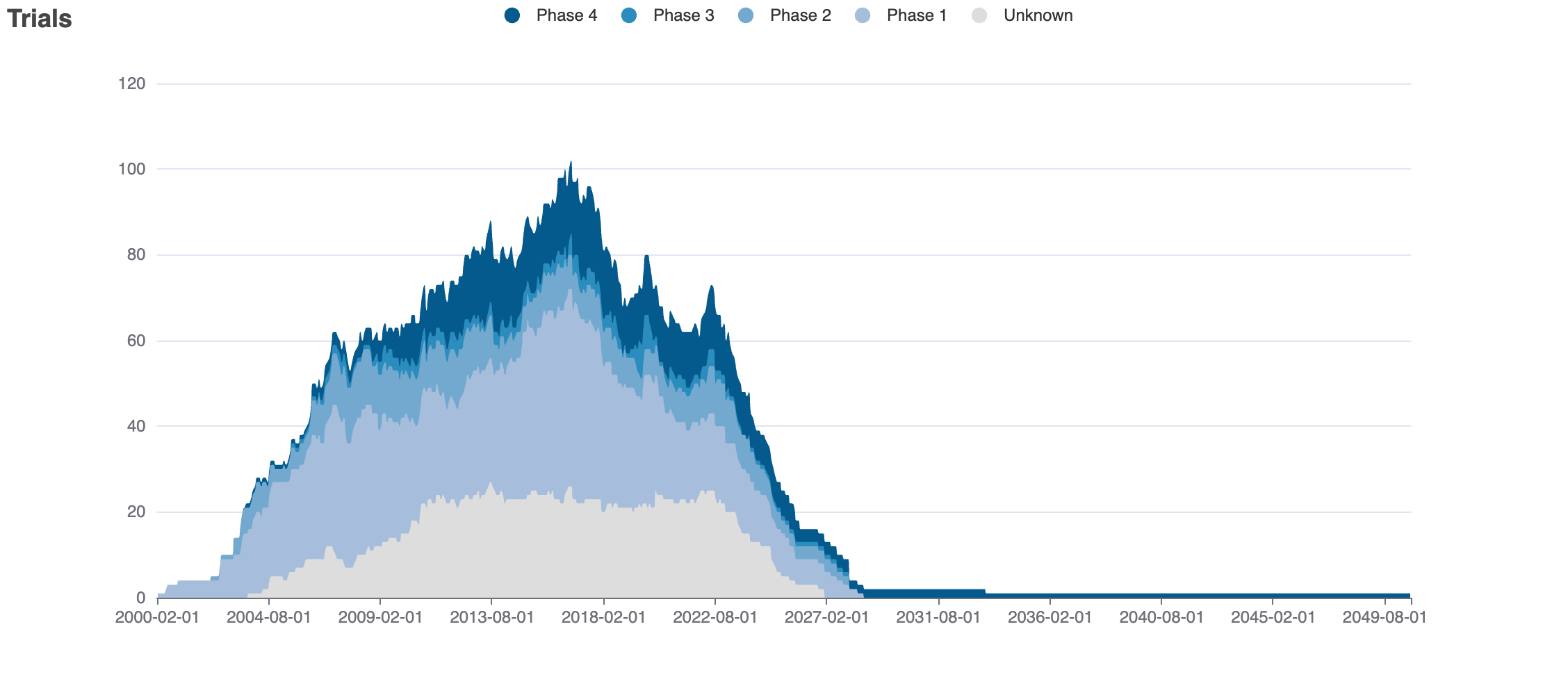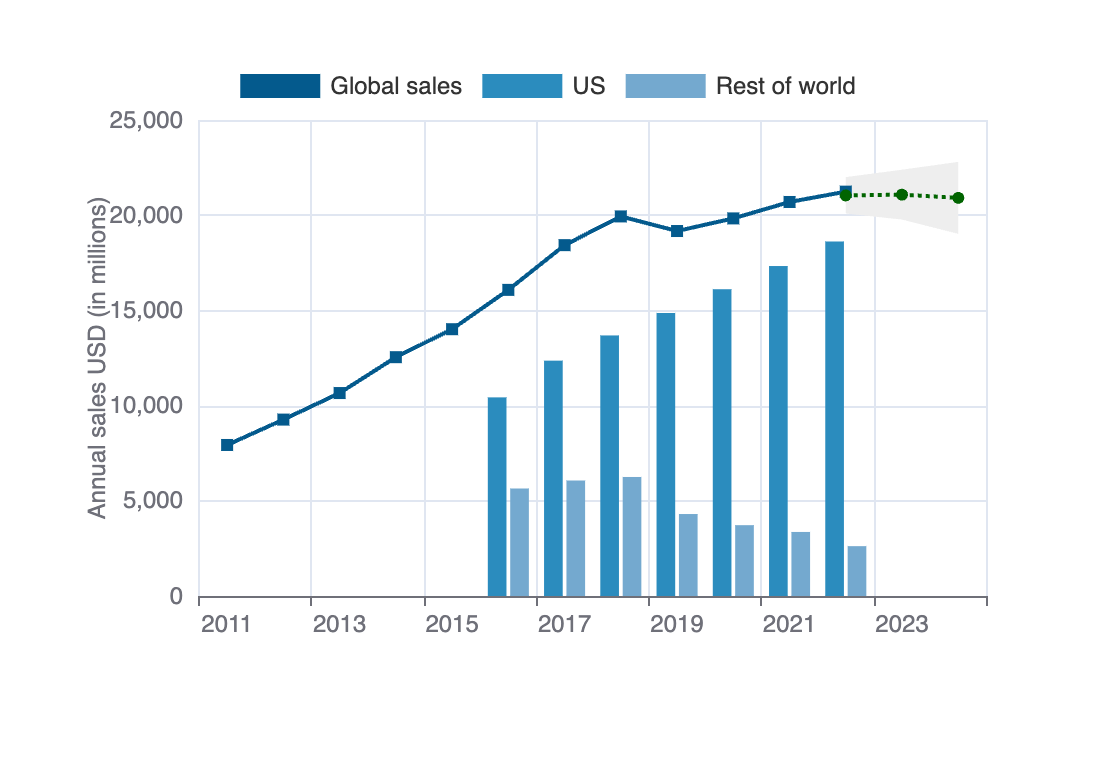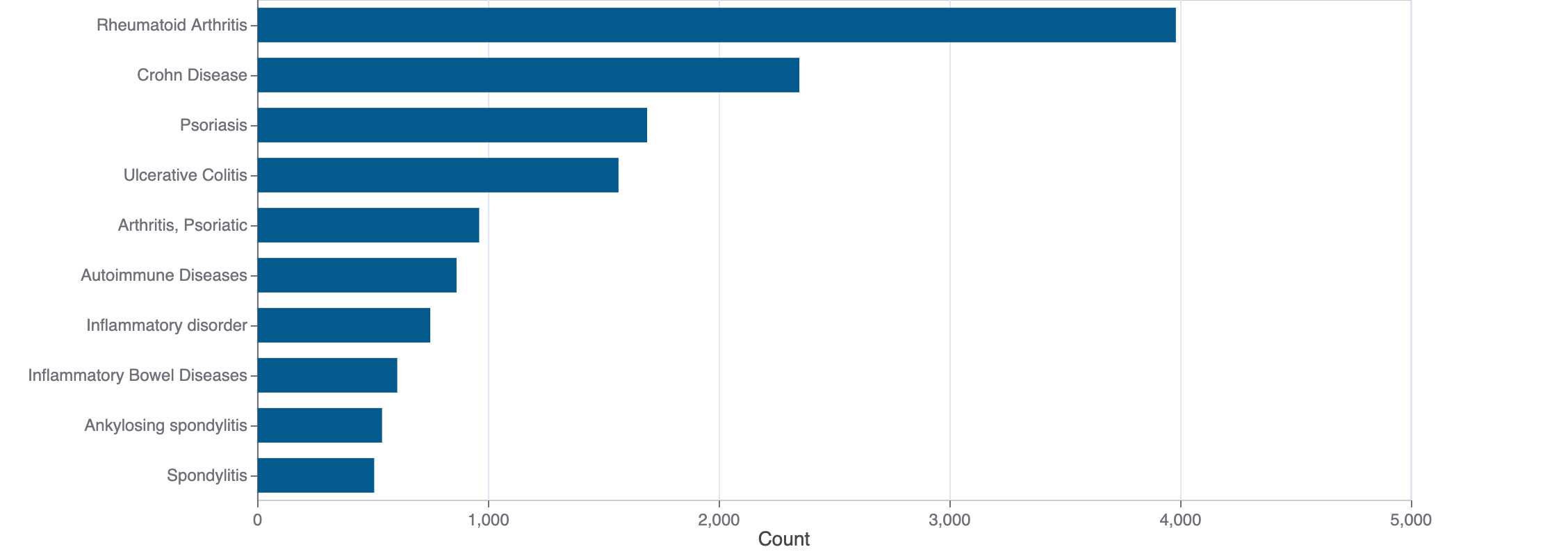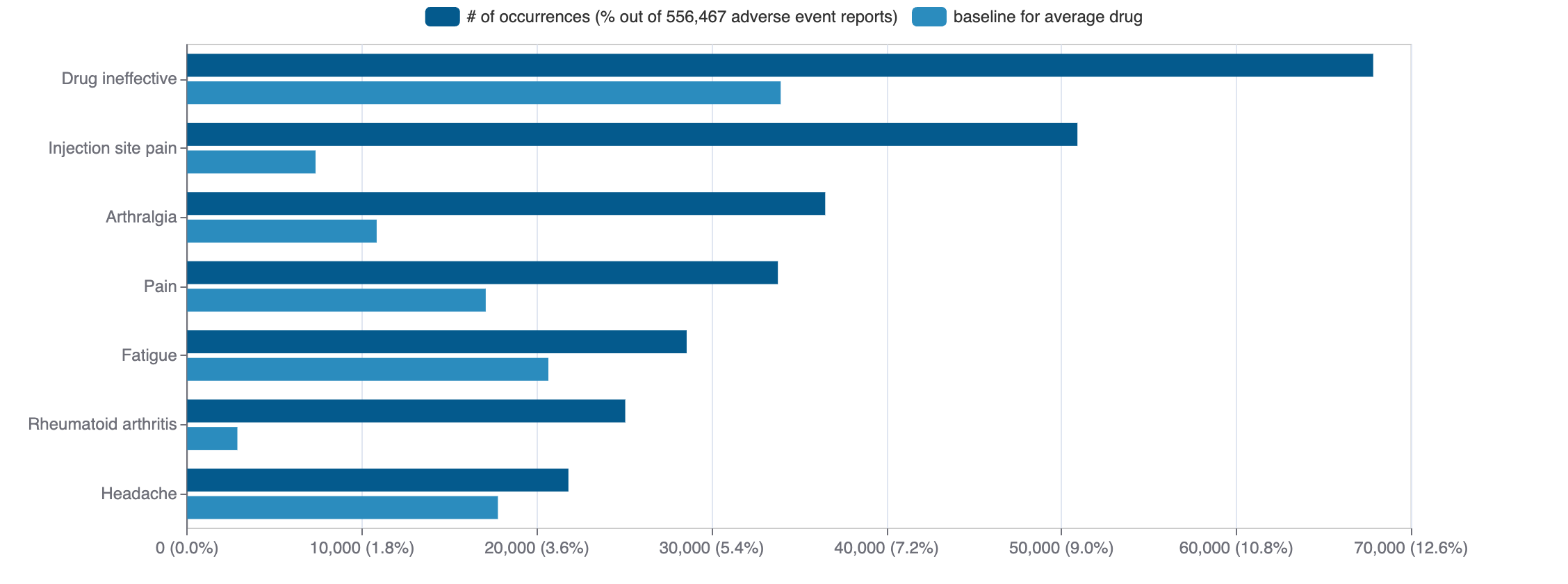Dalvance, Xydalba(dalbavancin)
Dalvance, Xydalba (dalbavancin) is an unknown pharmaceutical. Dalbavancin was first approved as Dalvance on 2014-05-23. It is used to treat bacterial infections, infectious skin diseases, staphylococcal infections, and streptococcal infections in the USA. It has been approved in Europe to treat bacterial skin diseases and soft tissue infections.
Download report
Favorite
Events Timeline
Commercial
Clinical
Drug
Target
Variants
Financial
Trends
Safety
Events Timeline
5D
1M
3M
6M
YTD
1Y
2Y
5Y
Max
Events
FDA approval date
EMA approval date
Patent expiration date
Study first post date
Last update post date
Start date
Primary completion date
Completion date
Results first post date

Mock data
Subscribe for the real data
Subscribe for the real data
Commercial
Therapeutic Areas
Therapeutic Area | MeSH |
|---|---|
| infections | D007239 |
| skin and connective tissue diseases | D017437 |
Trade Name
FDA
EMA
Dalbavancin, Dalvance
Labels
FDA
EMA
Brand Name | Status | Last Update |
|---|---|---|
| dalbavancin | ANDA | 2025-12-03 |
| dalbavancin hydrochloride | ANDA | 2025-11-06 |
| dalvance | New Drug Application | 2025-01-13 |
Indications
FDA
EMA
Agency Specific
FDA
EMA
Expiration | Code | ||
|---|---|---|---|
DALBAVANCIN HYDROCHLORIDE, DALVANCE, ABBVIE | |||
| 2024-07-22 | NPP | ||
| 2024-05-23 | GAIN | ||
| 2019-05-23 | NCE | ||
Patent Expiration
Patent | Expires | Flag | FDA Information |
|---|---|---|---|
| Dalbavancin Hydrochloride, Dalvance, Abbvie | |||
| 6900175 | 2028-05-23 | U-3499 | |
HCPCS
Code | Description |
|---|---|
| J0875 | Injection, dalbavancin, 5 mg |
Clinical
Clinical Trials
4044 clinical trials
View more details

Mock data
Subscribe for the real data
Subscribe for the real data
Indications Phases 4
Indication | MeSH | Ontology | ICD-10 | Ph 1 | Ph 2 | Ph 3 | Ph 4 | Other | Total |
|---|---|---|---|---|---|---|---|---|---|
| Axial spondyloarthritis | D000089183 | — | — | — | — | — | 1 | — | 1 |
Indications Phases 3
Indication | MeSH | Ontology | ICD-10 | Ph 1 | Ph 2 | Ph 3 | Ph 4 | Other | Total |
|---|---|---|---|---|---|---|---|---|---|
| Infections | D007239 | EFO_0000544 | — | 1 | — | 1 | — | — | 2 |
| Communicable diseases | D003141 | — | — | 1 | — | 1 | — | — | 2 |
| Bacterial infections | D001424 | — | A49 | 1 | — | 1 | — | — | 2 |
| Methicillin-resistant staphylococcus aureus | D055624 | — | — | — | — | 1 | — | — | 1 |
| Staphylococcal skin infections | D013207 | EFO_1001849 | L00 | — | — | 1 | — | — | 1 |
| Infectious skin diseases | D012874 | — | — | — | — | 1 | — | — | 1 |
| Bacterial skin diseases | D017192 | — | — | — | — | 1 | — | — | 1 |
| Cellulitis | D002481 | EFO_0003035 | L03.90 | — | — | 1 | — | — | 1 |
| Psoriasis | D011565 | EFO_0000676 | L40 | — | — | 1 | — | — | 1 |
| Neoplasms | D009369 | — | C80 | — | — | 1 | — | — | 1 |
Show 6 more
Indications Phases 2
Indication | MeSH | Ontology | ICD-10 | Ph 1 | Ph 2 | Ph 3 | Ph 4 | Other | Total |
|---|---|---|---|---|---|---|---|---|---|
| Bacteremia | D016470 | EFO_0003033 | R78.81 | — | 1 | — | — | — | 1 |
| Endocarditis | D004696 | EFO_0000465 | I33 | — | 1 | — | — | — | 1 |
| Multiple myeloma | D009101 | — | C90.0 | 1 | 1 | — | — | — | 1 |
| Plasma cell neoplasms | D054219 | — | — | 1 | 1 | — | — | — | 1 |
| Leukemia | D007938 | — | C95 | 1 | 1 | — | — | — | 1 |
| Recurrence | D012008 | — | — | 1 | 1 | — | — | — | 1 |
| Precursor cell lymphoblastic leukemia-lymphoma | D054198 | — | C91.0 | 1 | 1 | — | — | — | 1 |
| Precursor t-cell lymphoblastic leukemia-lymphoma | D054218 | — | — | 1 | 1 | — | — | — | 1 |
| Precursor b-cell lymphoblastic leukemia-lymphoma | D015452 | — | — | 1 | 1 | — | — | — | 1 |
Indications Phases 1
No data
Indications Without Phase
No data
Epidemiology
Epidemiological information for investigational and approved indications
View more details
Drug
General
| Drug common name | Dalbavancin |
| INN | dalbavancin |
| Description | Dalbavancin is a semisynthetic glycopeptide used for the treatment of acute bacterial skin and skin structure infections caused or suspected to be caused by susceptible isolates of designated Gram-positive microorganisms including MRSA. It has a role as an antibacterial drug and an antimicrobial agent. It is a carbohydrate acid derivative, a monosaccharide derivative, a glycopeptide and a semisynthetic derivative. |
| Classification | Small molecule |
| Drug class | vancomycin-related compounds |
| Image (chem structure or protein) |  |
| Structure (InChI/SMILES or Protein Sequence) | CN[C@H]1C(=O)N[C@@H]2Cc3ccc(cc3)Oc3cc4cc(c3O[C@@H]3O[C@H](C(=O)O)[C@@H](O)[C@H](O)[C@H]3NC(=O)CCCCCCCCC(C)C)Oc3ccc(cc3Cl)[C@@H](O)[C@@H]3NC(=O)[C@H](NC(=O)[C@@H]4NC(=O)[C@@H](NC2=O)c2cc(cc(O)c2Cl)Oc2cc1ccc2O)c1ccc(O)c(c1)-c1c(O[C@H]2O[C@H](CO)[C@@H](O)[C@H](O)[C@@H]2O)cc(O)cc1[C@@H](C(=O)NCCCN(C)C)NC3=O |
Identifiers
| PDB | — |
| CAS-ID | 171500-79-1 |
| RxCUI | — |
| ChEMBL ID | CHEMBL3301669 |
| ChEBI ID | 82721 |
| PubChem CID | 16134627 |
| DrugBank | DB06219 |
| UNII ID | 808UI9MS5K (ChemIDplus, GSRS) |
Target
No data
Variants
No data
Financial
Revenue by drug
$
€
£
₣
Dalvance – Allergan


Mock data
Subscribe for the real data
Subscribe for the real data

Mock data
Subscribe for the real data
Subscribe for the real data
Dalvance – Warner Chilcott


Mock data
Subscribe for the real data
Subscribe for the real data

Mock data
Subscribe for the real data
Subscribe for the real data
Tabular view
Estimated US medical usage
No data
Trends
PubMed Central
Top Terms for Disease or Syndrome:

Mock data
Subscribe for the real data
Subscribe for the real data
Additional graphs summarizing 8,601 documents
View more details
Safety
Black-box Warning
No Black-box warning
Adverse Events
Top Adverse Reactions

Mock data
Subscribe for the real data
Subscribe for the real data
1,117 adverse events reported
View more details
© 2020-2025 Collaborative Drug Discovery Inc. (CDD) | Terms of Use